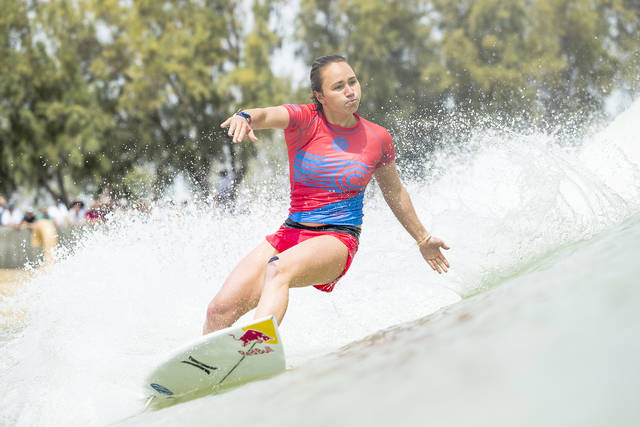Creating a perfect wave doesn’t always result in a perfect contest, but day one of the Founders’ Cup was completed on Saturday and the reactions were as widespread as anticipated. Making sure that surfers have consistently clean opportunities is a great goal and would remove much of the luck factor from competition, but in spite of the impressive performances and the novelty of the event, there definitely needs to be some tweaking to make this format as good as it can be.
A man-made wave that can showcase elite skill in a controlled setting has been Kelly Slater’s vision for many years. He and his team have done amazing things with the available technology, researching and refining in order to make the Surf Ranch what it is today. By just about all accounts, the athletes love going there. It’s the ultimate free surf experience. No paddle battles, no position guessing, just as many waves as you want to ride with endless opportunity to work on maneuvers.
But all of that doesn’t necessarily make it as entertaining as a typical contest. Saturday’s event featured most of the biggest names in surfing, split into five geographic teams. After the two rounds of action, the top three in points moved on to today’s final round. Those three teams will be Team USA (80.83 points), Team Australia (75.82) and Team World (75.33). Team Brazil (72.30) and Team Europe (72.12) were eliminated from the event.
There are inherent flaws in the format. Once a ride is completed, there is basically a four-minute wait to reset the system and send the next wave through. We’re used to lulls in the action when the ocean may go quiet for 10 to 15 minutes at a time, but to know that each wave is going to be followed by a four-minute break just takes a lot of the energy out of the crowd and the competition. We’re supposed to be removing mother nature’s uncertainty from the equation, so the waiting is even more magnified. It’s like watching Stephen Curry shoot a basketball, but them needing to inflate a completely new ball before taking each shot.
There was also a longer delay in order to take care of some equipment maintenance. That’s not a major surprise and it shouldn’t count against the concept, but it does destroy some of the momentum with the constant stopping and starting.
It’s also very tough to judge these waves, but maybe that’s a good thing. There’s no longer a sliding scale as there usually is. Most of the time, we can say that so-and-so got the bigger wave and gets the higher score when two people surf similar maneuvers. In this case, nobody is getting the bigger wave, so it’s purely based on what you do with it. But when everyone is so good and when they basically know exactly when the barrel will form and where it will end, the small differences can be so minute and the judges have to nitpick so narrowly.
Overall, this seems like a fun experience to attend and be a part of, even for just be for the novelty factor. It’s not that exciting to watch from afar, though I will say that the exhibition aspect could be a big part of that. If there were more on the line, it could change.
I have a hard time believing that these types of events will replace more and more surf breaks as they do continue to spread around the world. Although I say that with the current presentation. If some of these issues improve, which they undoubtedly will, then we’ll continue to evaluate the pros and cons of man-made wave events.
I can’t say I’m overly enthused about the upcoming Championship Tour contest after Saturday’s showcase, but I’m happy to give it a chance and see what the one-on-one version looks like.
•••
David Simon can be reached at dsimon@thegardenisland.com.


